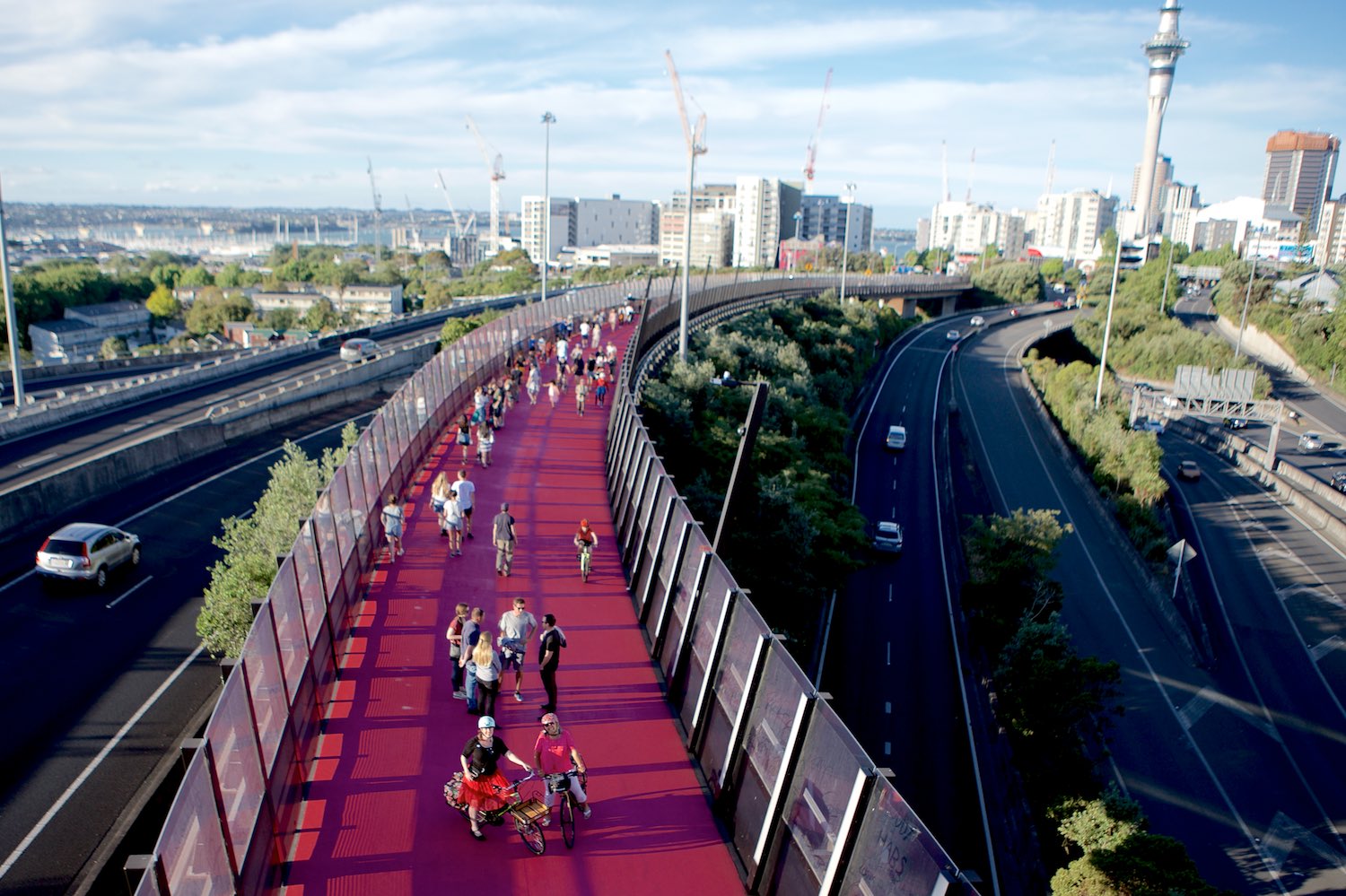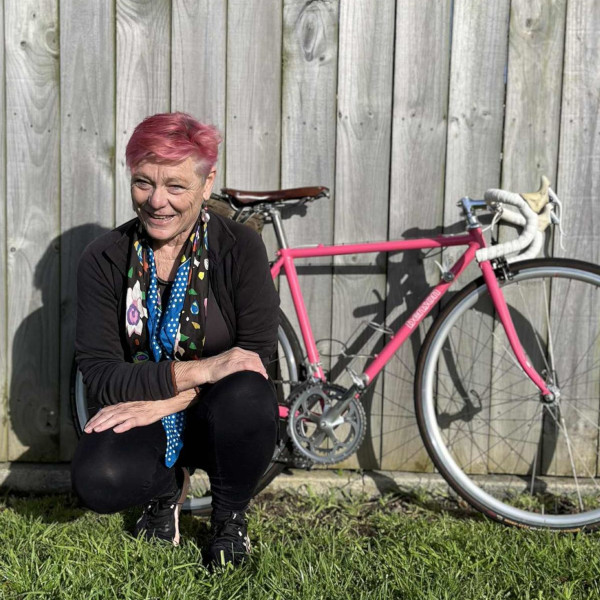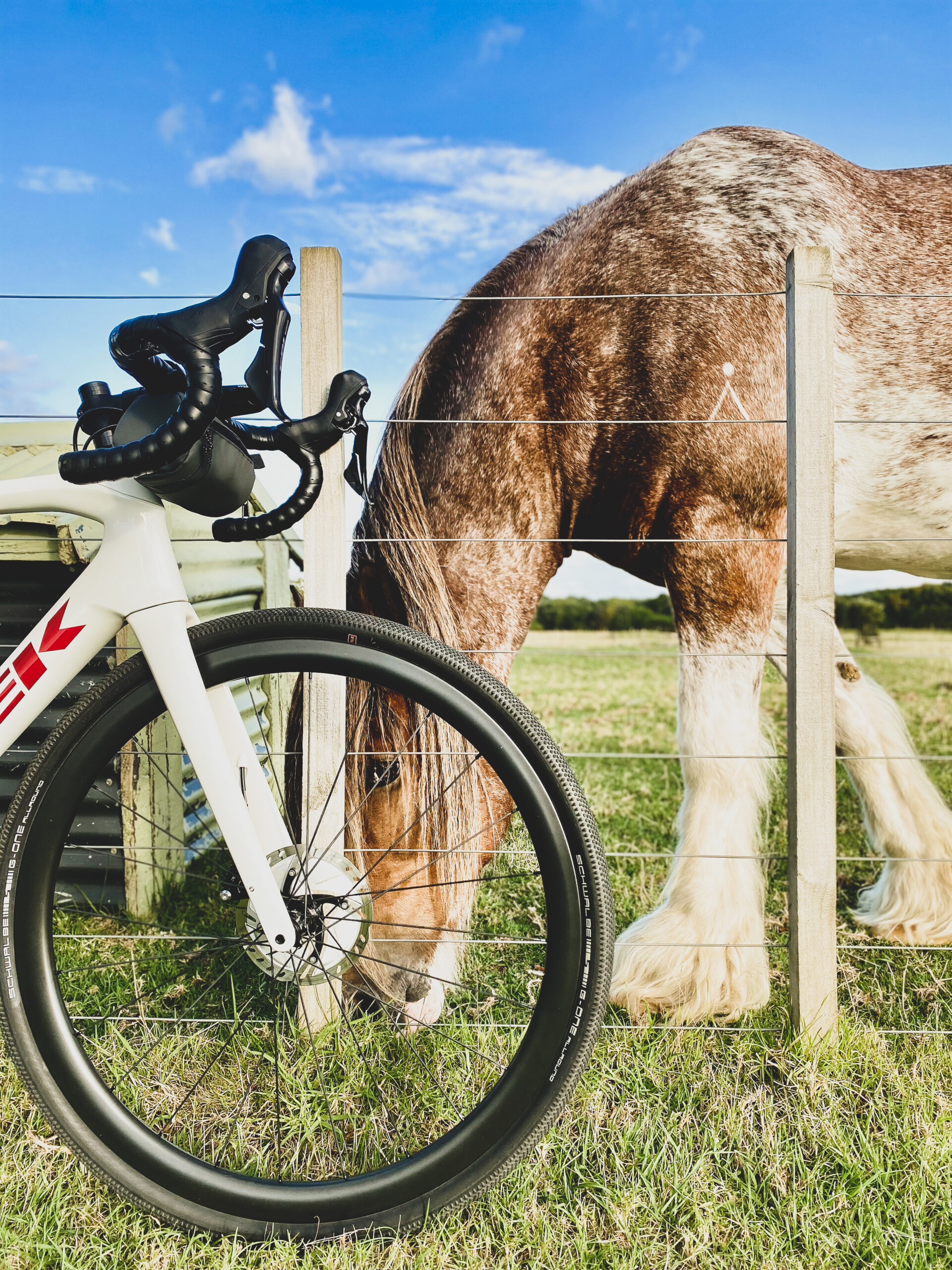Several recent weather events have highlighted the need for more resilience and nimbleness in being able to respond in the aftermath of disasters. In a report into the Auckland Council’s response to the unprecedented weather event on 27 January, perhaps the biggest finding was that the Council’s emergency management system was wholly underprepared for a weather event of the flood’s magnitude.
Bike Auckland took a look into how bikes can form part of our future emergency response. In other parts of the world, there are many examples of bikes being used after disaster struck. After Hurricane Sandy in 2012, which shut down bridges and caused petrol shortages in New Jersey, people turned to bicycles en masse to travel in and out of Manhattan. In Japan, after the 2011 Tōhoku earthquake that caused the Fukushima nuclear meltdown, bicycle shops reported selling their entire stock so that people could get home when the roads were impassable by car. And in Kobe, Japan during the 1995 Hanshin earthquake, emergency responders were deployed by bicycle outside the city limits and rode through the rubble-strewn streets, treating people who were otherwise unreachable by emergency vehicles.
There are also many stories from across Aotearoa! After the February 2011 earthquakes Jane Pearce navigated the devastated landscape of her city by bike and said ‘“My bike gave me a bubble of normalcy in this crazy place”.
In 2022 two Hutt Hospital nurses were able to deliver insulin to patients who desperately needed it by using their bikes to move through blocked streets.
After the catastrophic devastation following Cyclone Gabrielle in February 2023, Gisborne was inaccessible by car so a local used his neighbour’s bike to check in on people and kept the community connected with the rest of Aotearoa. A Hawkes Bay local used his bike to retrieve his daughter’s teddy from their otherwise inaccessible house.
Just one month earlier in Tairāwhiti, Monty Manuel biked for two hours across rugged terrain to deliver urgent supplies after Cyclone Hale in January.

And more recently on 9 May, Tāmaki Makaurau went into a state of emergency thanks to yet another high-rainfall storm, and the city was totally gridlocked. The trains were cancelled, motorways closed, and the remaining arterial and residential roads couldn’t accommodate the large influx of traffic; cars, trucks, and buses alike were at a near standstill. Meanwhile, people on bikes reported their commutes were congestion free:


Hired e-scooters were also crucial for getting people home when they were left stranded by the barely functioning public transport.
This gridlock isn’t just a problem for people trying to get home. It also stops emergency services from being able to get to the people who need them, potentially leading to more serious injury and death. Because bikes are space efficient they leave more space on the roads for emergency services.

Video
Given climate change means we will see more extreme weather events, exploring how bikes (and by extension e-scooters and other micromobility) fit into our response to disasters would be transformational for our community’s resilience and recovery.
The Advantages of Bikes
The things that make cycles great in cities – their efficiency, their small size, the fact they don’t rely on petrol – also make them great during times of disaster. Bikes offer a number of advantages when used in emergency situations, particularly if they are e-bikes, including:
- Bikes take up less room and leave more space on the road for emergency vehicles
- Bikes don’t get stuck in any traffic
- Mountain bikes can easily go over terrain that is too difficult for cars and other vehicles to traverse. This makes them ideal for quickly getting to destinations in the event of an emergency.
- Bikes are an excellent form of transport during emergency situations when roads have been damaged. Because they are light and easy to manouvre they are unlikely to further damage roads.
- Modifying a bike to handle rugged terrain can be as simple as buying hardier tyres, and is significantly more affordable than modifying a larger vehicle for the same terrain.
And while they are larger and heavier (and generally more expensive), cargo bikes can be an incredibly versatile option in disaster and emergency response. Their increased carrying capacity lends them well to moving essential goods, such as medical supplies, through a disaster-torn landscape.
In the United States, in anticipation of the potential threat of an earthquake off the coast, a growing network of cyclists and emergency managers have joined forces to bring communities together for cargo bike races. The Disaster Relief Trials are a fun, practical means to improve community disaster planning. During the races, participants race across their city hauling resources that simulate cargo runs they might make following a disaster.
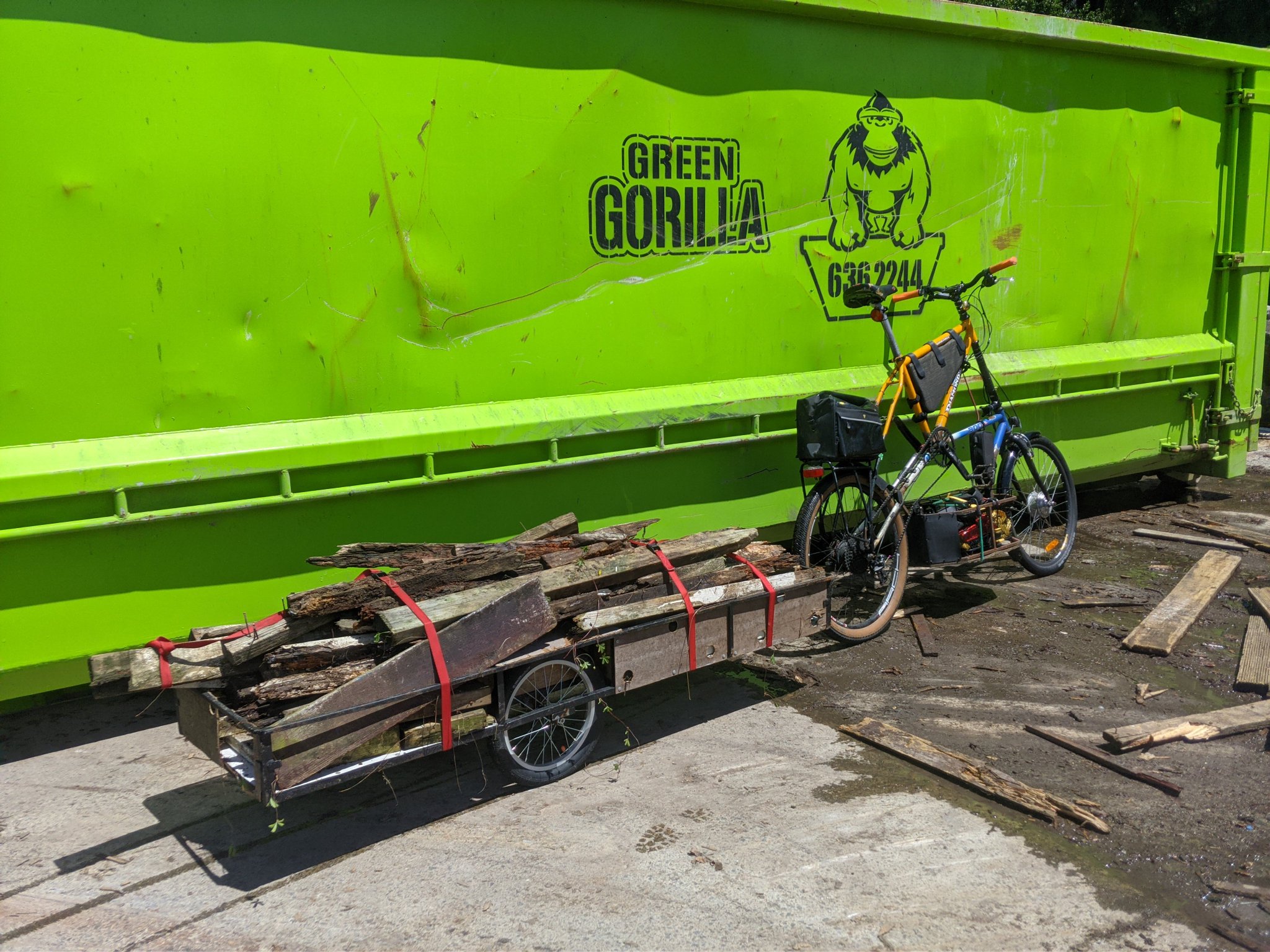
Photo courtesy of Michael Lawton.
Initiatives like this can empower existing cargo bike owners to upskill, and improve the resilience of the neighbourhoods that they live and work in – a goal that we should all be able to get behind. The better our cycle network is, the more people will own and be confident on these bikes, and the more robust our response capabilities become!
Not only can bikes be used to deliver cargo after disaster strikes, they can also be used to pick up precious cargo as advised by Auckland Emergency Management in the Twitter post below.

Another worthwhile consideration is community cohesion (“togetherness”). When people cycle and walk, they make more eye contact with others. This may not sound like a big deal, but we know that this contributes significantly to individuals knowing their neighbours better. When you only travel by car, these micro-bonding opportunities don’t happen nearly as much, meaning we lose opportunities to get to know our community, and are likely to experience more loneliness.
We know that knowing your neighbours improves community cohesion, and we also know that greater community cohesion is absolutely vital for responding to, and recovering from, emergencies. Neighbourhoods with community cohesion have the social infrastructure to respond to emergencies and to support each other more effectively, to check in on each other, and to give each other help when needed. So, if we can get more people walking and cycling, we can improve our neighbourhoods’ ability to respond and recover to emergency situations.
Too Much of a Bad Thing
What we’re really getting at, is that there is value in diversifying the kinds of infrastructure we build so that other modes of transport are viable. If we prioritise cars over everything else like we have done for the last 50 or so years, we make it so that cars are the only way anyone gets around, and we make it so nobody is able to get around at all when disaster strikes (like the gridlocked traffic you all saw on Tuesday 9 May 2023!).
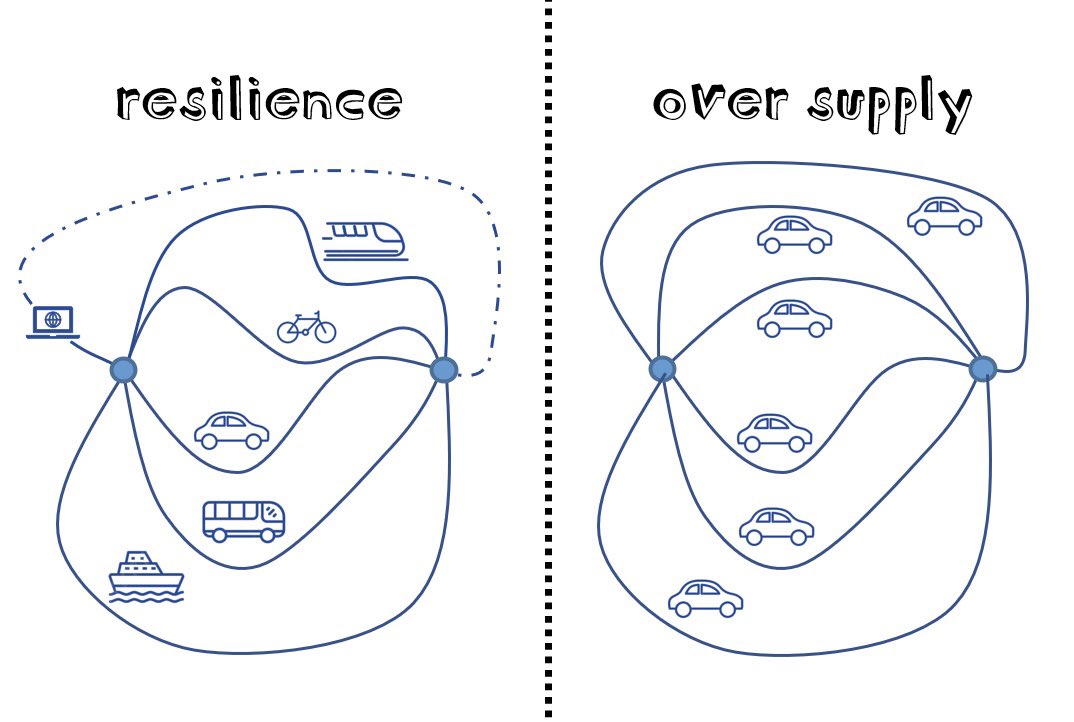
If we are going to plan for transport resilience in the face of an emergency, and all evidence suggests that we should, then we need to build our transport infrastructure appropriately. If we are going to have a response by bike in a disaster, and all evidence suggests that we should, then we need to make the shift from people using cars to people using bikes in everyday life so that they have the confidence to cycle when responding to a disaster. We can empower people to use bikes for transport in their everyday life by providing a connected network of safe cycleways right now, so that people feel safe enough to get on a bike right now, enabling them to have a bike (and the skills) at the ready for future emergency situations.
And we haven’t even mentioned climate mitigation yet!
More safe cycleways = more people on bikes = less carbon emissions = more climate change mitigation = less climate change related weather events. Aotearoa may not be able to tackle that alone, but that doesn’t mean we shouldn’t do our bit.
So, while the conversation switches to climate change adaptation remember that bikes play a crucial part in making a more resilient community and responding to emergencies – both climate induced and bog standard!
And, next time you’re preparing to weather an emergency, make sure your bike tyres are pumped up! If you are lucky enough to have an e-bike, make sure that it’s fully charged. Your bike may prove to be your best way of getting around!
You might just see emergency services out on bikes too!
Update October 2023: Enjoyed your read? Check out this epic opinion piece from Timothy Welch on the same theme: “When the shit hits the fan, bikes will bring us back from the brink” – The Spinoff.


